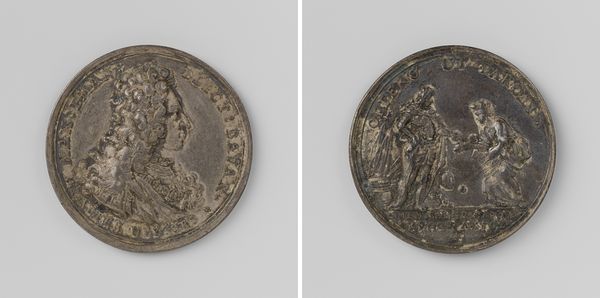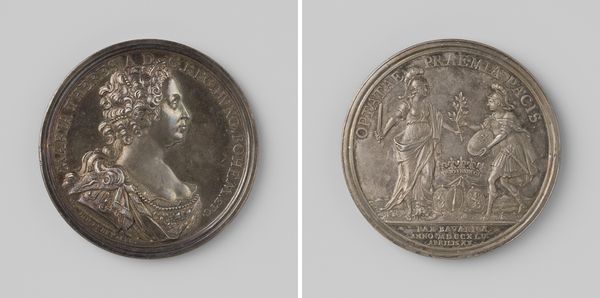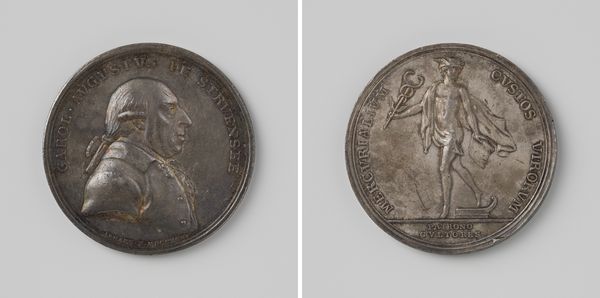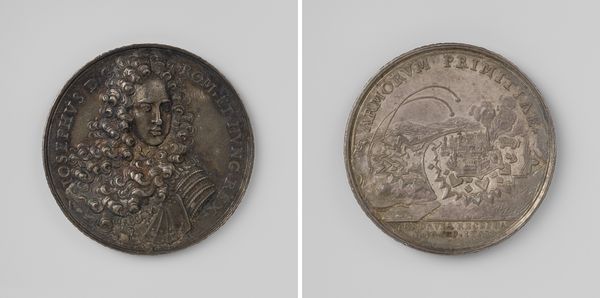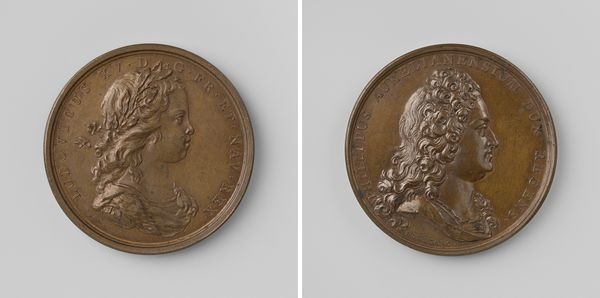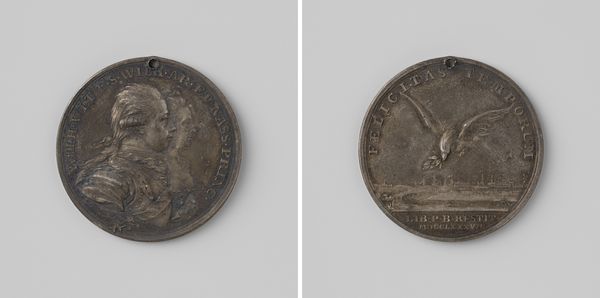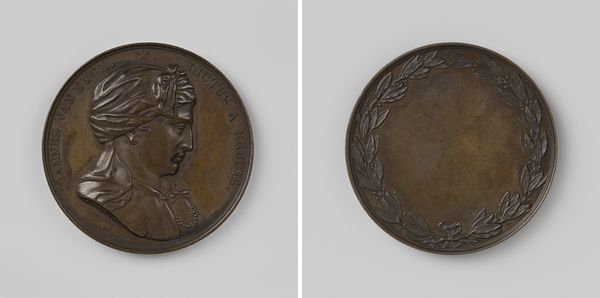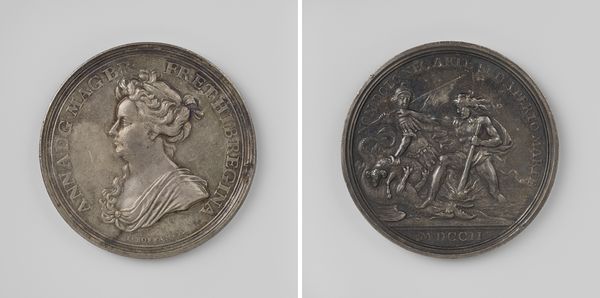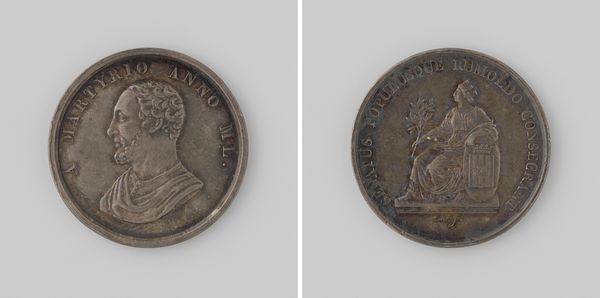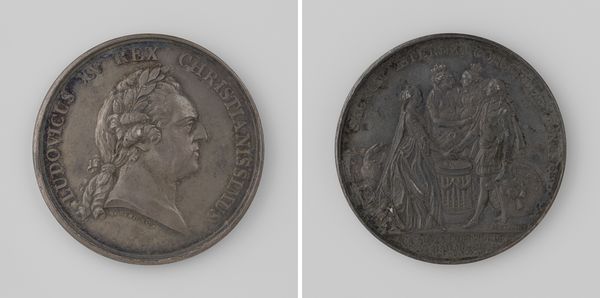
Sophia, kleindochter van Jacobus I, weduwe van de keurvorst van Braunschweig en Luneburg, claimt de Engelse troon. Mathilda, dochter van Hendrik II, koning van Engeland 1701
0:00
0:00
metal, sculpture
#
portrait
#
baroque
#
metal
#
sculpture
#
sculpture
#
statue
Dimensions: diameter 6.5 cm, weight 131.33 gr
Copyright: Rijks Museum: Open Domain
Curator: Editor: This striking baroque coin, created in 1701 by Samuel Lambelet, depicts Sophia, granddaughter of James I. The material itself seems so precious. What’s your take on this work? Curator: The medal’s very form and function as a mode of distribution become key. Materials like metal, historically linked to wealth and power, serve not just as artistic mediums, but also communicative tools in this portrait. What kind of message do you think metal conveys here? Editor: Prestige, definitely. But does the choice of metal reflect Lambelet's socioeconomic background? It seems so intertwined with displaying status. Curator: Exactly. Consider also the minting process: a skilled artisan translates political ambitions into tactile reality. It's labor-intensive, but facilitates mass production and circulation. Who do you imagine received this metal artwork and under what circumstances? Editor: Probably people who already held some kind of power or had connections. Almost like political propaganda, which maybe makes the artist more of a craftsperson than an artist, maybe even blurring the lines of what "art" is. Curator: Precisely! Lambelet and the artisanal work troubles that distinction. By viewing this piece with this approach, it helps us understand how art-making at the time acted as a form of socio-political and historical documentation. Editor: Thinking about it in this way highlights its intended use as an instrument for asserting Sophia's claim to the English throne. It has really shifted my understanding. Thanks! Curator: Indeed, analyzing the materiality and methods challenges assumptions and shows how objects reinforce certain ideological arguments about dynastic succession and who truly holds power.
Comments
No comments
Be the first to comment and join the conversation on the ultimate creative platform.

